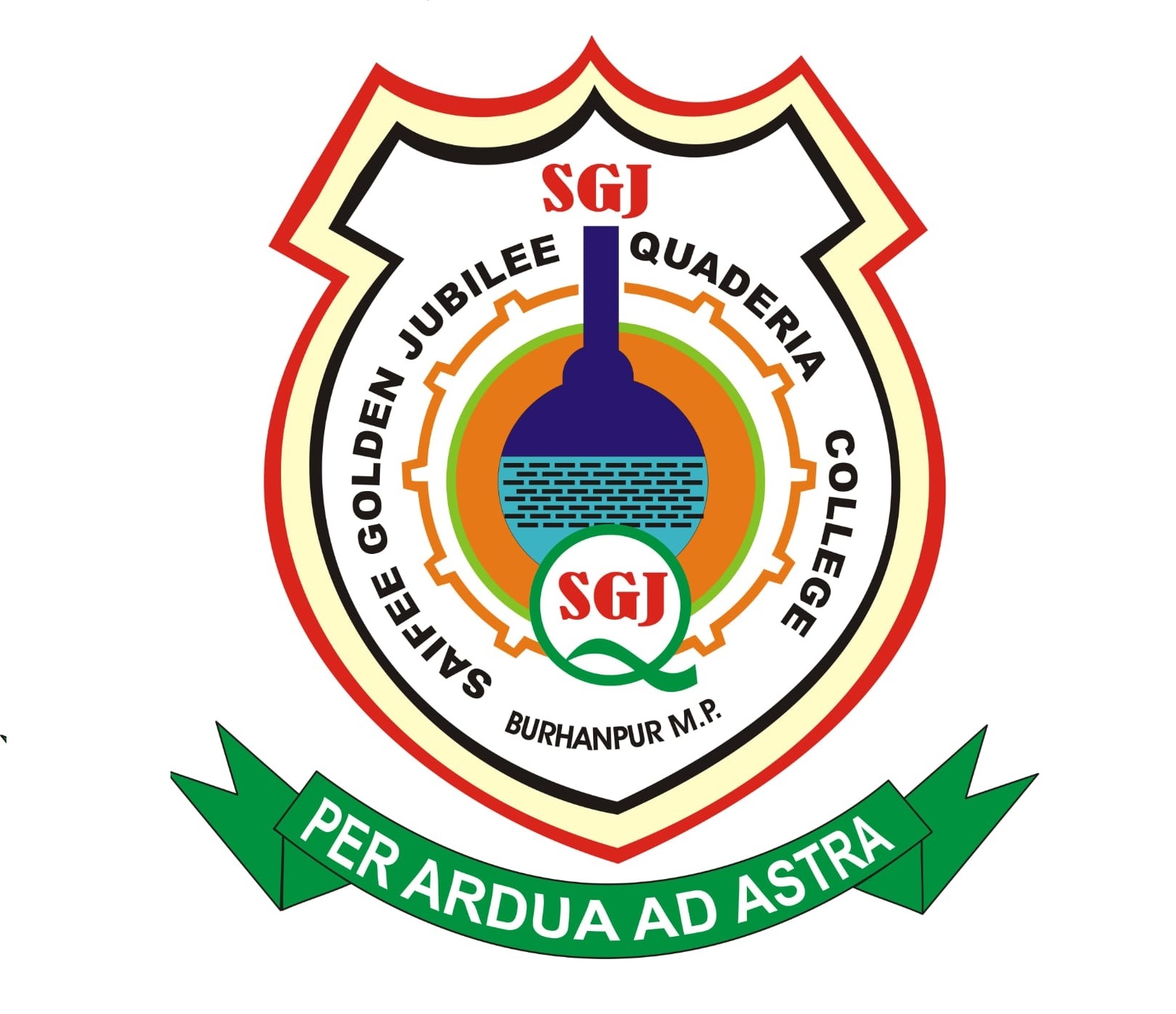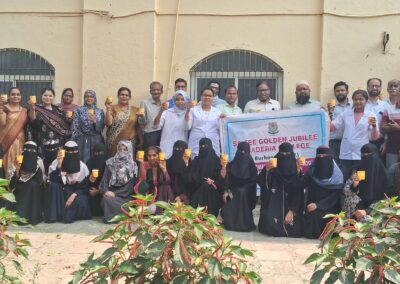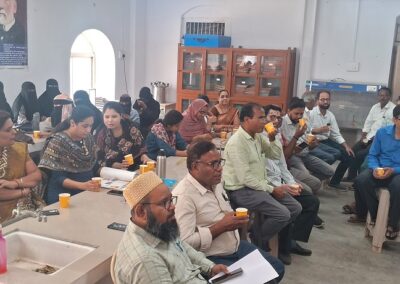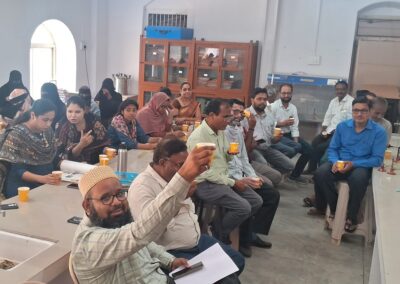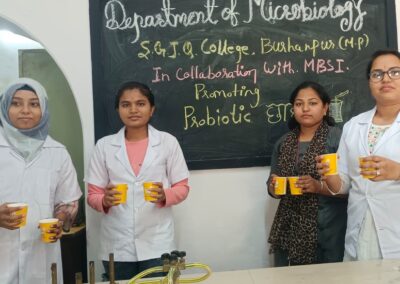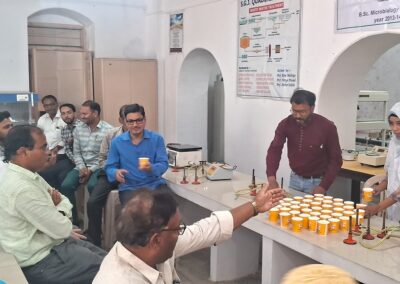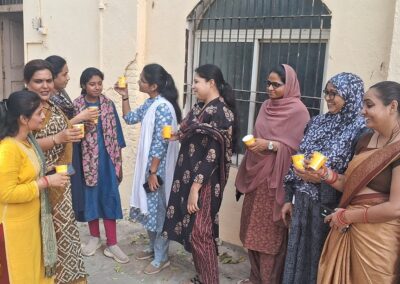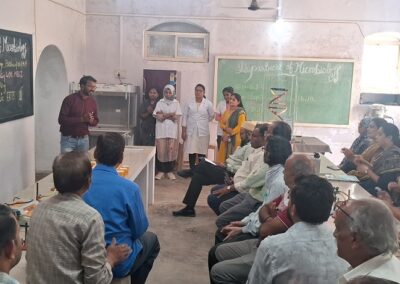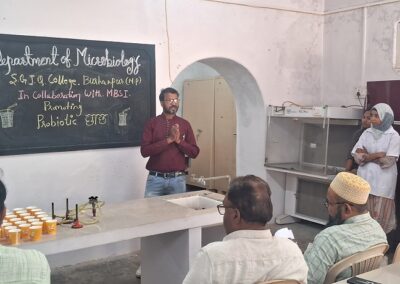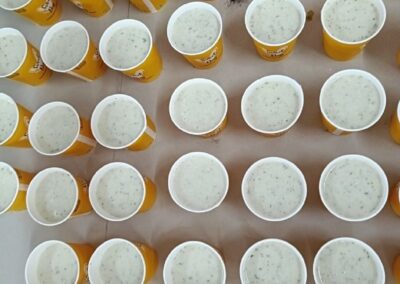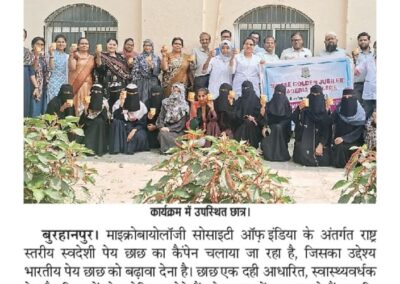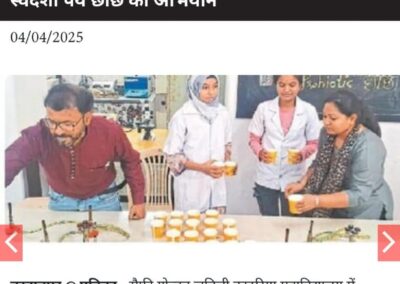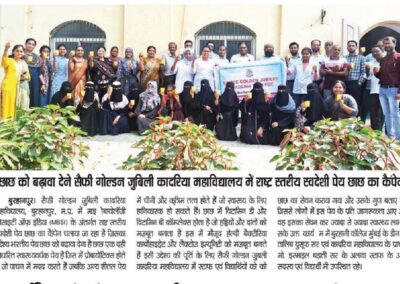In Collaboration with: Microbiologist Society of India (MBSI)
The college organized a “Drink Butter Milk” campaign to promote health benefits of butter milk, focusing on its nutritional value, digestive benefits and role in maintaining overall well-being. Students and staff participated enthusiastically in an interactive session and learning about the importance of incorporating butter milk into their daily lives.
Butter Milk: A Healthy Choice
Butter milk is a fermented dairy product made from the liquid left behind after churning cream to make butter. It is rich in probiotics, protein, and various nutrients.
Benefits of Butter Milk:
- Digestive Health: – Supports gut health and aids digestion
- Nutritional Value: – Rich in protein, calcium, and vitamins
- Hydration: – Helps replenish fluids and electrolytes
- Weight Management: – Can aid in weight loss and maintenance
Incorporating butter milk into your daily routine can have numerous health benefits.
A Special Acknowledgement
Visionary Leadership:
– Special thanks to Dr. A.M.Deshmukh, President of MBSI to initiate this campaign and guiding us for successful execution of the event.
– Dr. Talib Yusuf: A renowned academician and Director of SGJQ ,College, Burhanpur and Dean (Academic Affairs) Burhani College, Mumbai, his innovative idea and expertise in promoting health and wellness inspired the “Boost Your Health with Butter Milk” campaign. His vision and guidance
played a pivotal role in shaping this programme.
– Mr. Mohammed Ismail Bafati: Incharge Principal of Saifee Golden Jubilee Quaderia College, Burhanpur, M.P., whose leadership and support ensured the successful execution of the campaign.
Their combined efforts and dedication to promoting health and wellness among students and staff
have made a lasting impact.
Appreciation
The success of the “Boost Your Health with Butter Milk” campaign is attributed to the active participation and enthusiasm of the college teaching and non-teaching staff and students. Their involvement and engagement made this event a memorable experience, promoting a culture of health and wellness within the college community.
Special Thanks
The “Boost Your Health with Butter Milk” campaign was successfully organized under the expert
guidance of:
– Prof. Azharuddin (Biotechnology Department)
– Prof. Ritu Malvi (Microbiology Department)
And the entire teaching and non-teaching staff of SGJQ family
The event was meticulously executed by the dedicated efforts of 4th-year Microbiology students:
– Priyanka
– Misbah
– Dipali
– Harsha
Their teamwork, enthusiasm and contributions were invaluable to the campaign’s success.
Benefits of the Event
The “Boost Your Health with Butter Milk” campaign provided numerous benefits to both teachers and students, including:
- Increased Awareness: About the nutritional value and health benefits of butter milk.
- Improved Health: Encouraged participants to incorporate butter milk into their daily routine.
These benefits will have a lasting impact on the college community.
Conclusion
The “Boost Your Health with Butter Milk” campaign was a resounding success, promoting health awareness and fostering a sense of community among students and faculty.
